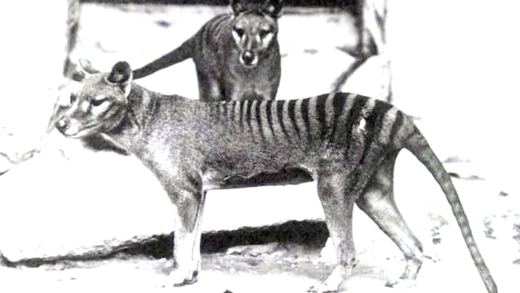Tarsiers are fascinating primates known for their large eyes and unique adaptations. They thrive in tropical habitats, primarily in Southeast Asia, and are among the smallest primates. Their diet consists mainly of insects and small animals. Tarsiers communicate through vocalizations and body language. Conservation efforts are crucial to protect them from habitat loss.
What is a Tarsier?: Understanding this unique primate
Tarsier is a fascinating primate that captivates many with its unique features. These tiny creatures belong to the family Tarsiidae and are primarily found in Southeast Asia. Tarsiers are known for their distinctive large eyes, which are nearly as big as their heads, and their ability to rotate their heads almost 180 degrees. This remarkable adaptation allows them to spot prey effectively in the dense forests where they live.
Typically, tarsiers have a small, compact body, averaging about 4 to 6 inches in length, not including their long tails. They possess elongated fingers and toes, which help them grasp branches and leap between trees. Tarsiers are nocturnal, meaning they are most active at night, which is when they hunt for food and socialize.
Tarsier Habitat: Where do these little creatures live?
Tarsiers thrive in various habitats, primarily in tropical rainforests. Their natural habitat includes dense foliage that provides ample cover and hunting grounds. These primates are mainly found in:
- Philippines
- Borneo
- Sumatra
- Sulawesi
They prefer areas with a mix of trees and shrubs, allowing them to move easily between branches. Tarsiers are also known to inhabit mangrove forests and secondary growth forests. The loss of habitat due to deforestation poses a significant threat to their survival, making conservation efforts crucial for their future.
Tarsiers: The Smallest Primates?
When discussing the smallest primates, tarsiers often come to mind. While they are not the absolute smallest (that title goes to the mouse lemur), they are among the tiniest primates, with some species weighing as little as 2.5 ounces. Their small size allows them to maneuver through their forest habitats with agility, making them efficient hunters.
The combination of their compact bodies and large eyes creates a striking appearance that sets them apart from other primates. This unique morphology aids them in hunting insects and small vertebrates, which comprise their diet.
What Do Tarsiers Eat?: The diet of these tiny animals
The diet of tarsiers consists mainly of insects, but they are also known to consume small vertebrates such as birds, lizards, and even small mammals. Their nocturnal hunting habits make them skilled predators, using their keen eyesight to spot prey in low-light conditions.
Tarsiers have a unique method of hunting. They will often sit silently on a branch, waiting for an unsuspecting insect to wander by. Once they spot their target, they leap with precision, using their long limbs to capture their meal. This diet provides them with the necessary nutrients to thrive in their habitat.
In conclusion, tarsiers are not only fascinating due to their physical characteristics but also their unique hunting techniques and dietary habits. Understanding these aspects helps highlight the importance of preserving their natural habitats and ensuring their survival.
Big Eyes, Big Benefits: How Tarsiers Use Their Large Eyes
Tarsier eyes are a remarkable feature that plays a crucial role in their survival. These large eyes, which can be up to 16 millimeters in diameter, are not just for show. They enable tarsiers to see exceptionally well in low-light conditions, making them efficient nocturnal hunters.
Their big eyes provide a wide field of vision, allowing them to spot potential prey from a distance. This is especially beneficial in the dense forests where they live, where movement can be hard to detect. To put it simply, their eyes are like night-vision goggles, giving them an edge while hunting insects and small vertebrates.
Moreover, tarsiers can’t move their eyes like humans can. Instead, they rotate their heads almost 180 degrees, which compensates for their fixed eye position. This unique adaptation allows them to quickly scan their surroundings without moving their bodies, which helps them avoid predators and find food.
Tarsier Uniqueness: What Sets Them Apart from Other Primates?
Tarsiers are unique in several ways, making them stand out in the primate world. Firstly, their small size combined with their large eyes creates a striking appearance that many find endearing. Unlike other primates, tarsiers are exclusively carnivorous, which is quite rare among primates. They primarily feed on insects, small birds, and lizards, showcasing their adaptability as hunters.
Another distinctive trait is their ability to leap. Tarsiers can jump up to 10 times their body length, thanks to their powerful hind limbs. This agility is essential for navigating the treetops of their forest habitats. Furthermore, tarsiers have a unique way of communicating; they use a combination of vocalizations and body language, which includes intricate facial expressions.
In terms of genetics, tarsiers occupy a unique position on the evolutionary tree. They share characteristics with both prosimians and higher primates, making them a fascinating subject for researchers.
Tarsiers and Humans: What’s the Connection?
The connection between tarsiers and humans is intriguing. While we are not closely related, studying tarsiers can provide insights into our own evolutionary history. Tarsiers are considered to be a bridge between the more primitive primates and the more advanced ones, including humans.
Evolutionarily, tarsiers share a common ancestor with humans that lived over 60 million years ago. This ancestor gave rise to various primate lineages, including the one that eventually led to humans. Understanding the characteristics and behaviors of tarsiers can help scientists learn more about primate evolution and the traits that have persisted or changed over time.
Moreover, studying their unique adaptations can shed light on how environmental pressures shape species. As we face challenges like climate change and habitat loss, insights from tarsier research could inform conservation strategies not just for them, but for many species.
Fun Facts about Tarsiers: Interesting Tidbits You Didn’t Know
Here are some interesting tarsier facts that might surprise you:
- Tarsiers have the ability to turn their heads almost completely around—up to 180 degrees!
- They are one of the few carnivorous primates, primarily eating insects and small animals.
- Their eyes are so large that they cannot be fully closed, which is why they look perpetually surprised.
- Tarsiers can leap over 10 feet in a single bound, thanks to their powerful legs.
- They communicate through a variety of sounds, including chirps and whistles, which are quite distinct.
These facts highlight just how fascinating and unique tarsiers are as a species. From their incredible adaptations to their peculiar behaviors, tarsiers truly are remarkable primates worth learning about.
Why So Big?: The Mystery of Tarsier Eye Size
Tarsier eye size is one of the most intriguing aspects of these tiny primates. Their eyes, measuring up to 16 millimeters in diameter, are proportionally the largest of any primate. This unique characteristic raises questions about why their eyes are so big. The primary reason is related to their nocturnal lifestyle. Large eyes allow tarsiers to gather more light, enhancing their vision in low-light conditions, which is crucial for hunting at night.
Additionally, the size of tarsier eyes is linked to their need for depth perception while leaping between branches. With larger eyes, they can better judge distances, which helps them execute their impressive jumps. The eyes themselves are fixed in their sockets, meaning tarsiers cannot move them as humans do. Instead, they compensate by rotating their heads almost 180 degrees, which aids in maintaining awareness of their surroundings.
In summary, the large eyes of tarsiers serve essential functions for survival, from enhanced night vision to improved depth perception, making them a perfect adaptation for life in the trees.
Tarsier Communication: How Do They Talk?
Tarsiers have developed unique communication methods that are vital for their social interactions and survival. They primarily use a combination of vocalizations, body language, and facial expressions to communicate with one another. Tarsiers produce a variety of sounds, including chirps, whistles, and barks, which can indicate different emotions or intentions.
For example, soft chirps may signal contentment or a call to a mate, while sharper, louder calls can alert others to potential dangers. This vocal communication is complemented by their body language; tarsiers often use their posture and movements to convey messages, such as signaling alarm or readiness to mate. Facial expressions also play a crucial role, with specific movements indicating aggression or submission.
Understanding tarsier communication offers insights into their social structures and behaviors, showing how these small primates navigate their complex environments.
Tarsier Conservation: Why Do We Need to Protect Them?
The conservation of tarsiers is critical due to their vulnerable status. Habitat loss due to deforestation and human encroachment poses significant threats to their survival. Tarsiers rely on specific forest ecosystems, and the destruction of these habitats can lead to population declines.
Efforts to protect tarsiers include establishing wildlife reserves and promoting sustainable land-use practices. Conservation organizations are also working to raise awareness about the importance of preserving these unique primates and their habitats. Public education campaigns can help reduce human-tarsier conflicts, ensuring that both can coexist.
In conclusion, protecting tarsiers is essential not only for their survival but also for maintaining the biodiversity of the ecosystems they inhabit. By supporting conservation initiatives, we can help ensure that future generations will have the opportunity to learn about and appreciate these remarkable primates.





Comments are closed.